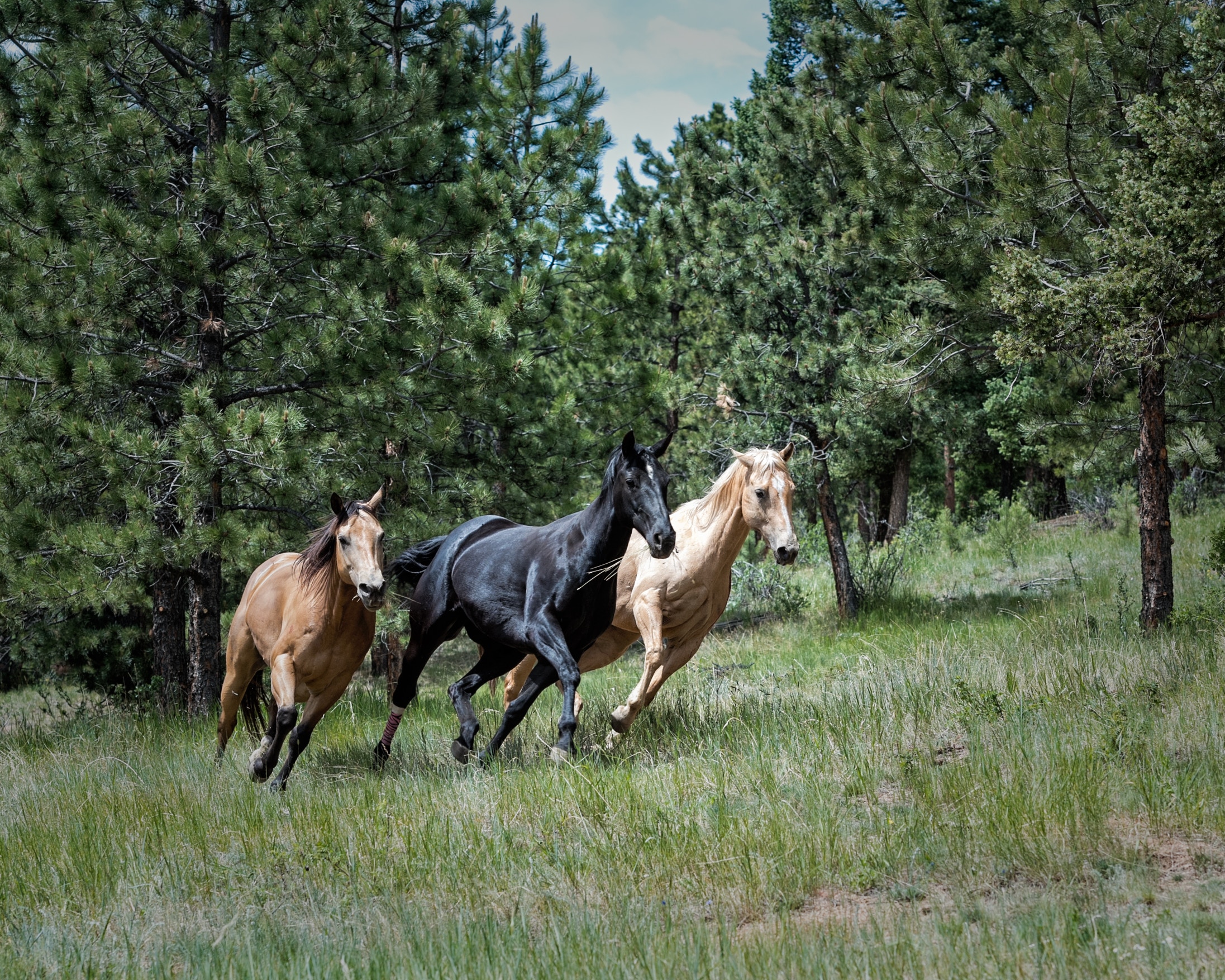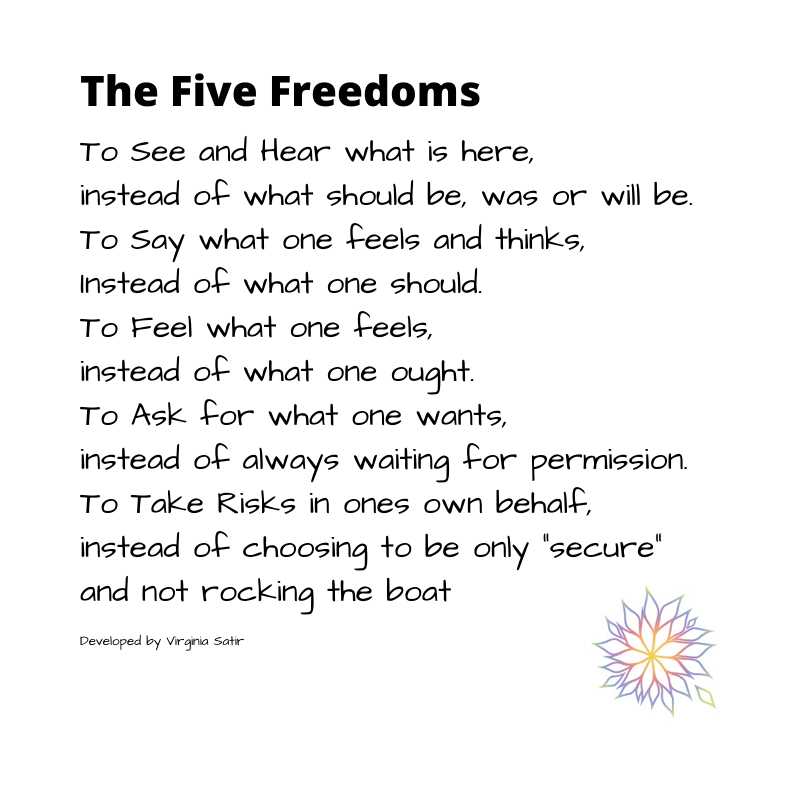
By Tricia Antoniuk, MSW, RSW
What I love about the Satir model is that while it has helped me be a more effective therapist, it has also helped me on my own journey to inner freedom and peace. I look back at my own inner experience of believing I was not enough and not being sure where I belonged, and I can see that I have grown so much and have learned to trust myself and let go of some expectations that tripped me up and made me resentful.
Satir loved working with “parts” that are within, and this makes so much sense to me.
I have a part that is very scared and shy, like a skittish rabbit. A part that is critical and blaming, like a judge. I have a part that is quiet and reflective, like an owl. There is the part that is responsible and competent, like a horse, and the part that easily retreats into its shell like a turtle. There is the part that likes to laugh and relax, and the part that feels guilty for not doing enough. These are just some of my parts… They show up at different times in different ways, but I have learned that they are all important, and they all have gifts to offer if I am willing to receive them.
When we were growing up, our parts were not always understood or welcomed, so we learned to hide them, to believe that they were “bad” or “wrong”, or to compartmentalize them so that we could distance from them or contain them. Our healing journey today is about reconnecting to our parts, appreciating them and integrating them. I have learned that there are not really “bad” parts – even though sometimes that seems hard to believe. Sometimes our parts evolved in certain ways to protect us, and as we heal, we want to find different ways to stay safe. But these parts were just doing the best that they knew in order to keep us safe. Today we can help them shift and transform, so that we can fully claim them and integrate them.
For example
What if the horse doesn’t like the skittish rabbit? These two parts can be in conflict: the rabbit is scared and easily runs away, but the horse is responsible and thinks that running away is bad. Can these parts be curious about each other and see the times that they each played an important part in my life? Can they appreciate each other and wonder about how they can support each other? What if they agree to work together instead of being in conflict? The scared rabbit can help the horse know when it’s important to stop and check something out. The horse can carry the rabbit through challenging situations. When they have a positive relationship, they respect each other and support each other, and I have access to the gift and wisdom of all my parts.
The sand tray is a wonderful way to explore my inner parts, because without analyzing them I can see how my inner parts relate to each other. I can see some parts that need to move over a little to make room for other parts. I can see that what I thought was an ugly stone is actually a beautiful geode, with colours and crystals that I was never able to see before now. And as the parts support each other, I see a river that nourishes them all and gives them life.
I am learning to appreciate and to welcome all my parts and to see them with new eyes.
This allows freedom and the realization that I am full of resources that I did not see before. Since inner freedom and peace are not a final destination, but an ongoing process that ebbs and flows, I am happy to report that I have not arrived and that I continue to grow and to learn these life lessons. However, I am grateful for the journey and for the ongoing need to say “yes” to myself and to trust my life energy. I am very grateful to Virginia Satir for her unrelenting belief that people have what they need to be fully alive and to bring their unique gifts to the world. And I am grateful for my own journey of discovery, love and connection: the paradox that the way to connect with others more freely is to first connect to myself with love.



